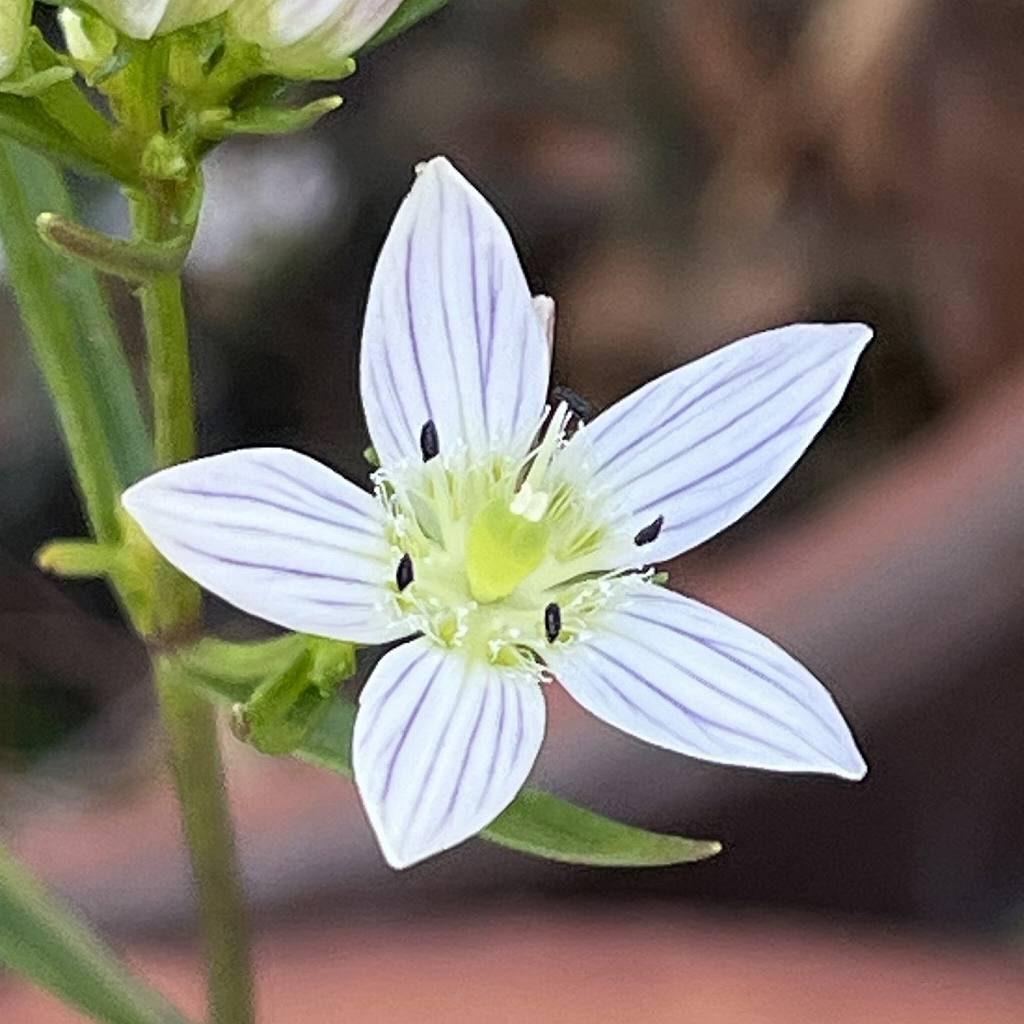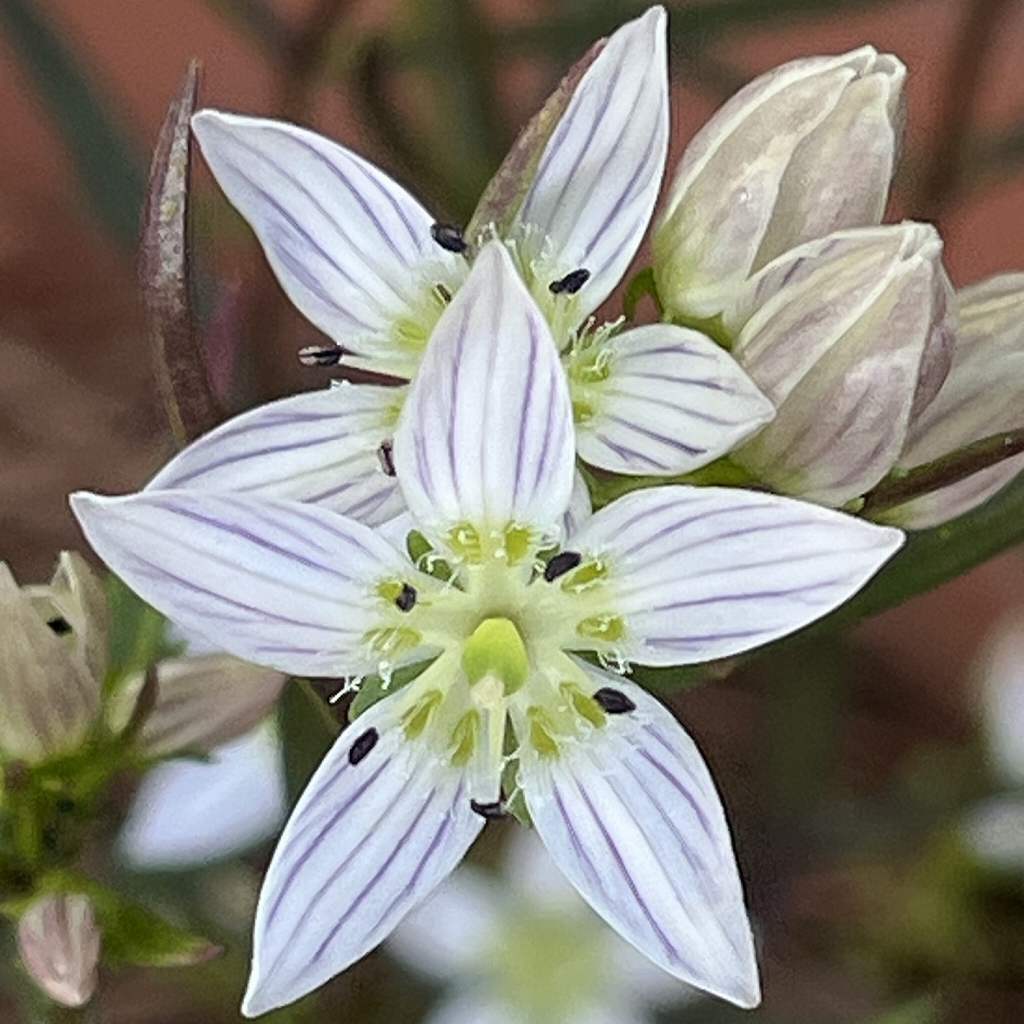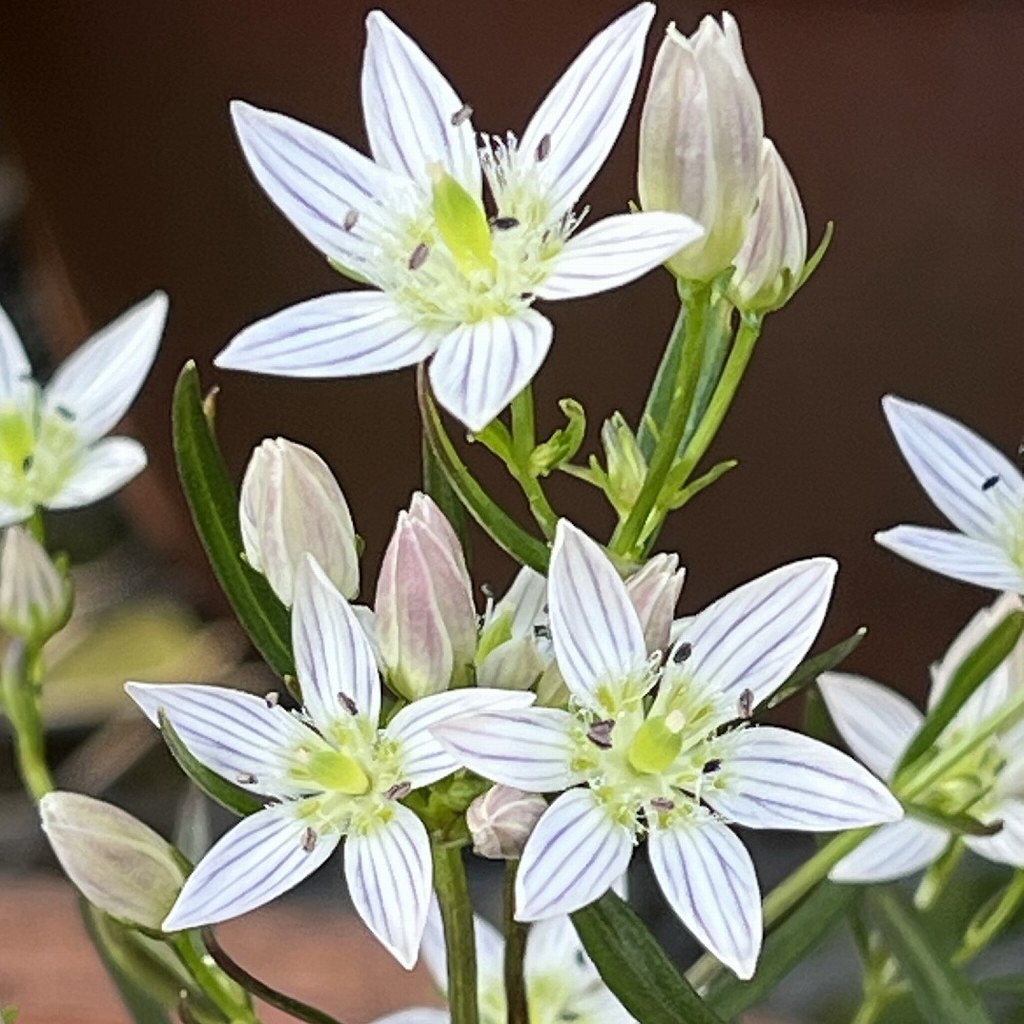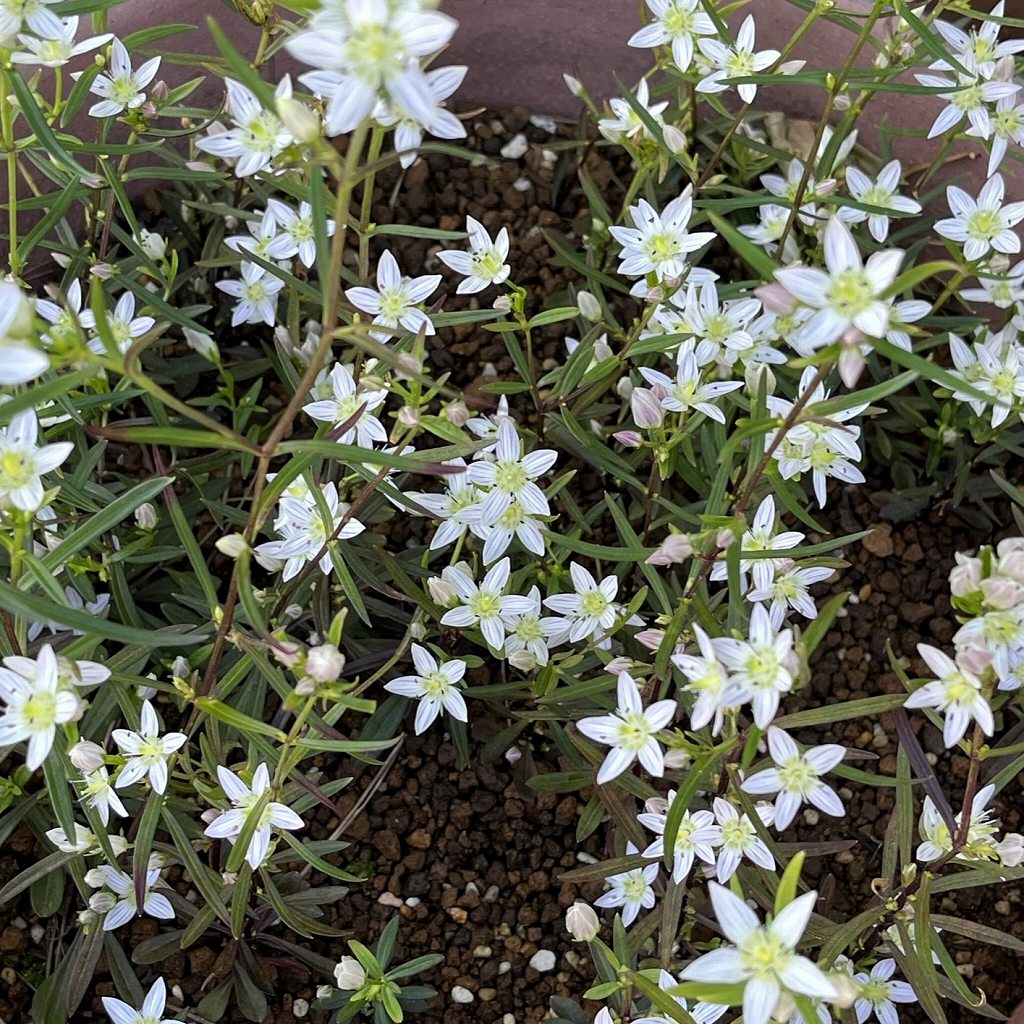センブリは日本三大民間薬の一つ。「千回振り出しても」苦い薬草で、昔から消化不良、食欲不振に用いられます。花言葉は「安らぎ」など。
Swertia Herb is one of the three major folk medicines in Japan. The Japanese name means “a medicinal herb so bitter that no matter how much you brew it, the taste doesn’t go away.” It has been used for indigestion and loss of appetite since ancient times. The language of flowers is “peace”.
【仮名】センブリ, トウヤク
【和名】千振, 当薬
【英名】Swertia Herb
【学名】Swertia japonica
【誕生】08/03, 10/08, 10/27
【開花】08, 09, 10, 11月
【花色】White






センブリ
センブリの概要
センブリはリンドウ科センブリ属の二年草です。日本のほか、朝鮮半島、中国に分布。山野の日当たりが良く、少し湿り気のあるところで自生しています。「毒溜」や「現の証拠」とともに日本三大民間薬の一つ。昔から消化不良、食欲不振に用いられます。花言葉は「安らぎ」など。
センブリの名前
センブリの名前の由来は「千回振り出しても」。これは「煎じても煎じても味が消えないくらい苦い薬草」だからです。この苦味により、生薬名も「まさに薬」という意味。ラテン語の属名スウェルティアは16世紀のオランダの画家で園芸家のエマヌエル・スウェールツへの献名です。
センブリの姿形
センブリは1年目に披針形の根生葉を広げて冬を越し、2年目に広線形の茎葉が対生。花は花冠が4~6裂、雄しべも4~6本で、上を向いて咲きます。花被片は青紫色の筋が入り、基部に緑色の蜜腺が2つ、縁に細長い毛。花後は細長い蒴果を結び、熟すと裂けて種子を散らします。
センブリの近縁
センブリの近縁種「紫千振」は日本の本州、四国、九州のほか、朝鮮半島、中国に分布しています。同じように苦味が強いものの、草丈が高く、花が青紫色で、おもには鑑賞用に流通。一方、「犬千振」は湿地に生え、姿形が似ているものの苦味に乏しく、生薬名も「淡味当薬」です。
センブリの利用
センブリは胃腸の調子が悪いときに用いられる薬草。開花時期の全草を天日で干し、煎じて服用します。スウェルチアマリンなどの苦味成分が舌を刺激。唾液や胃液の分泌を促し、消化の働きを助けます。一方、全草を焼酎に漬けた浸出液が育毛剤に。手に取って頭皮に塗り込みます。
Swartia Herb
Introduction of Swertia Herb
Swertia Herb is a biennial herb of the Gentianaceae family. It is distributed in Japan, the Korean Peninsula, and China. It grows wild in sunny, slightly damp areas in the mountains and fields. It is one of the three major folk medicines in Japan, along with “Houttuynia cordata” and “Geranium thunbergii”. It has been used for indigestion and loss of appetite since ancient times. The language of flowers is “peace”.
Name of Swertia Herb
The Japanese name of Swertia Herb means “a medicinal herb so bitter that no matter how much you brew it, the taste doesn’t go away.” The Latin genus name Swertia is a tribute to the 16th century Dutch painter and horticulturist Emanuel Sweert.
Shape of Swertia Herb
Swertia Herb overwinters by spreading lanceolate basal leaves in the first year. In the second year, broad linear leaves grow opposite each other. The flowers bloom facing upwards. The corolla has 4 to 6 lobes, and there are also 4 to 6 stamens. The tepals have bluish-purple stripes, two green nectary glands at the base, and long thin hairs on the edges. After flowering, it forms a long, slender capsule that, when ripe, splits and scatters seeds.
Relatives of Swertia Herb
Swertia pseudochinensis, a related species of Swertia Herb, is distributed in Japan’s Honshu, Shikoku, and Kyushu, as well as the Korean Peninsula and China. Although it has a similar bitter taste, it has a taller plant and violet-colored flowers, and is mainly distributed for ornamental purposes. On the other hand, “Swertia tosaensis” grows in wetlands and has a similar appearance but lacks bitterness.
Use of Swertia Herb
Swertia Herb is a medicinal herb used for gastrointestinal problems. The whole flowering plant is dried in the sun and then decocted for consumption. Bitter ingredients such as swertiamarin irritate the tongue. It stimulates the secretion of saliva and gastric juices and aids in digestion. On the other hand, the infusion from the whole plant soaked in shochu is used as a hair growth agent. Take it in your hands and apply it to your scalp.


